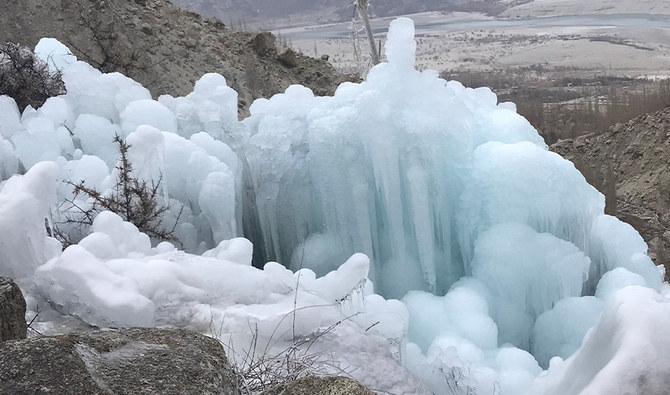In the heart of Chunda, a small village nestled in the highlands of Pakistan, a peculiar tradition has found its way back into the lives of the locals. The ancient ritual of glacier mating, a practice that had faded with the march of modernity, has been resurrected as a response to the urgent challenges posed by human-induced climate change.
The Challenge of Vanishing Glaciers
Chunda, part of the “Third Pole” holding the world’s largest volume of ice outside the polar regions, is facing an unexpected water crisis. For generations, the residents have relied on glacier melt to nourish their fields of wheat, barley, almonds, cherries, and apples. However, the rapid retreat of nearby glaciers has left once-lush hillsides barren and dry.
The situation is not unique to Chunda; across the Himalayan region, glaciers are melting at an alarming rate, forming unstable lakes, triggering avalanches, and posing a threat to the livelihoods of thousands. According to a June report by ICIMOD, even if global warming is limited, Asia’s high mountains are expected to lose 30%-50% of their ice mass by the end of the century, affecting 10 major Asian river systems that sustain nearly 1.9 billion people.
Embracing Tradition and Unconventional Strategies
In the face of this crisis, the United Nations Development Program (UNDP) is collaborating with the residents of northern Pakistan to adapt to climate change while tapping into indigenous culture for innovative solutions.
One such solution is the revival of the ancient practice of glacier mating, supported by a UNDP grant and the expertise of an engineer well-versed in Balti traditions. The villagers believe that combining chunks of “female” white glaciers with “male” black or brown glaciers will birth a new glacier capable of providing much-needed water.
The Glacier Mating Ritual
Led by village leader Saeed Baltistani and farmer Yasin Malik, a group of men embarked on a grueling journey to find the finest female and male glaciers. After carefully collecting chunks of ice, they undertook a silent ritual, placing the glacier pieces in a crevice near a mountain stream, adding wheat husks and coal, and reciting verses from the Qur’an.
The ritual, according to experts like Jakob Steiner, a mountain hydrologist, involves strategically placing the ice in caves, where it is shaded from solar radiation and can freeze, ensuring its longevity. However, the success of the glacier mating process remains uncertain, with previous attempts in the 1990s proving unsuccessful.
A Mosaic of Water-Saving Innovations
Beyond glacier mating, the residents are exploring various unconventional strategies to combat water scarcity. In Machulo, a village four hours away, a group of women known as the “water thieves” resorts to diverting stream water to irrigate their fields, despite its illegality.
Meanwhile, Zakir Hussain, an advisor on UNDP projects, is piloting measures like avalanche harvesting, utilizing steel nets to trap rocks and filter snow and ice, ultimately replenishing downstream water supplies. Additionally, residents are adopting the concept of ice stupas, inspired by neighboring Ladakh, creating frozen towers that melt in spring, providing water for farmers.
A Call for Patience and Collaboration
While these initiatives may not completely solve the broader challenges of climate change, they offer localized solutions that could alleviate immediate concerns. As Hussain emphasizes, these low-tech, low-cost methods empower locals and provide a degree of control over their water resources.
In the village of Pari, Bashir Haidari, a self-taught plumber and electrician, reflects on the impact of ice stupas on his community. Despite the skepticism they initially faced, the ice towers have proven to be a source of hope, especially for villages at higher altitudes.
Conclusion
As the residents of Chunda and surrounding villages grapple with the uncertainties of climate change, these unconventional approaches reflect a collective determination to find practical solutions. Whether through the ancient ritual of glacier mating, the audacity of the “water thieves,” or the ingenuity of ice stupas, these initiatives underscore the resilience of communities in the face of environmental challenges.
In the words of Haidari from Pari, “For the sake of humanity, to fight against global warming,” these communities are offering not only solutions but also a testament to the human spirit’s adaptability in the face of adversity.

